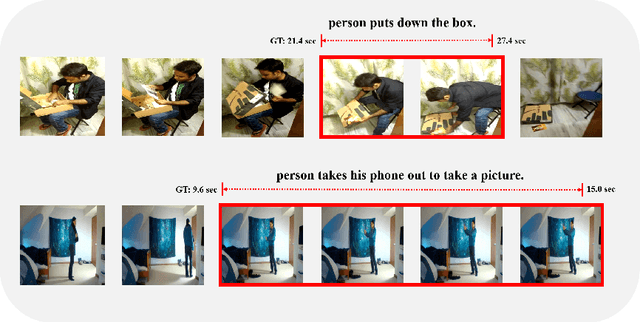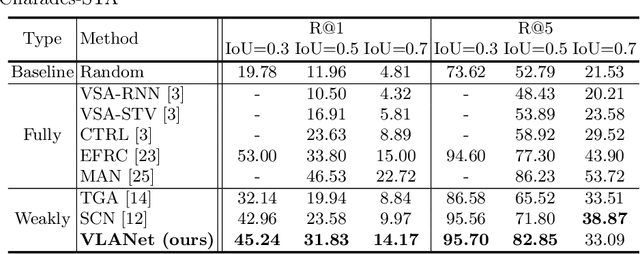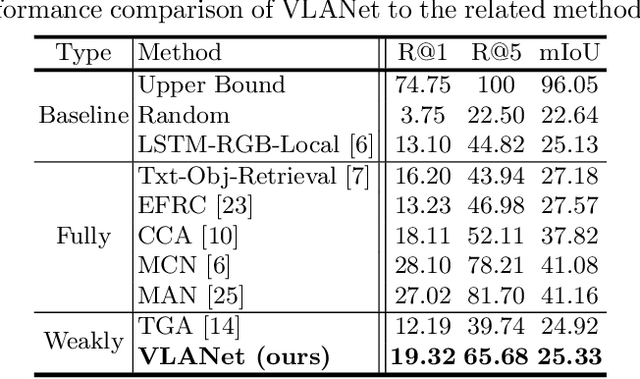VLANet: Video-Language Alignment Network for Weakly-Supervised Video Moment Retrieval
Paper and Code
Aug 24, 2020



Video Moment Retrieval (VMR) is a task to localize the temporal moment in untrimmed video specified by natural language query. For VMR, several methods that require full supervision for training have been proposed. Unfortunately, acquiring a large number of training videos with labeled temporal boundaries for each query is a labor-intensive process. This paper explores methods for performing VMR in a weakly-supervised manner (wVMR): training is performed without temporal moment labels but only with the text query that describes a segment of the video. Existing methods on wVMR generate multi-scale proposals and apply query-guided attention mechanisms to highlight the most relevant proposal. To leverage the weak supervision, contrastive learning is used which predicts higher scores for the correct video-query pairs than for the incorrect pairs. It has been observed that a large number of candidate proposals, coarse query representation, and one-way attention mechanism lead to blurry attention maps which limit the localization performance. To handle this issue, Video-Language Alignment Network (VLANet) is proposed that learns sharper attention by pruning out spurious candidate proposals and applying a multi-directional attention mechanism with fine-grained query representation. The Surrogate Proposal Selection module selects a proposal based on the proximity to the query in the joint embedding space, and thus substantially reduces candidate proposals which leads to lower computation load and sharper attention. Next, the Cascaded Cross-modal Attention module considers dense feature interactions and multi-directional attention flow to learn the multi-modal alignment. VLANet is trained end-to-end using contrastive loss which enforces semantically similar videos and queries to gather. The experiments show that the method achieves state-of-the-art performance on Charades-STA and DiDeMo datasets.
 Add to Chrome
Add to Chrome Add to Firefox
Add to Firefox Add to Edge
Add to Edge